Dordogne or Gascony – which is better?

Whenever I travel to the French south-west, I feel I'm going home. For someone born in Lancashire, this is unexpected. It perhaps dates back to the Hundred Years War and an unsavoury encounter between a warrior from Preston and a wench from Bergerac. Or maybe the region is simply any European's idealised homeland. Who wouldn't want to have roots in this mellow landscape of old-fashioned farming, long meaty meals and arcaded village squares where, if you leave your car unlocked, it will likely be untouched come morning?
So, yes, you should go. But where exactly? The region covers a substantial slab of France. Its essences are, though, perhaps best distilled in the Dordogne and, farther south, in Gascony. The Dordogne (or Périgord, as the French know it) is already so full of British visitors that it's often misconstrued as a summerhouse extension of the Home Counties.
Normandy or Brittany – which is better?
Gascony, however, remains relatively free of camping cars and cricket teams. I'm taking its Gers département to represent the whole, because that's its heartland, and my favourite bit. Below, then, the Dordogne and Gascony slug it out for your attention.

Landscapes
The two zones have much in common. Both give the impression that man and nature came to an understanding long ago, and have stuck to it. Both roll nicely, the views punctuated with castles, woodland, farmsteads, rickety-fenced pastures and fat geese and ducks doomed for their livers. But the Dordogne is more intense in the scale, beauty and resonance of its countryside. Not one but four strong rivers (plus innumerable tributaries) shape the landscape, carving gorges, idling into meanders and flowing with memories of when they were vital to survival, through fish and freight.
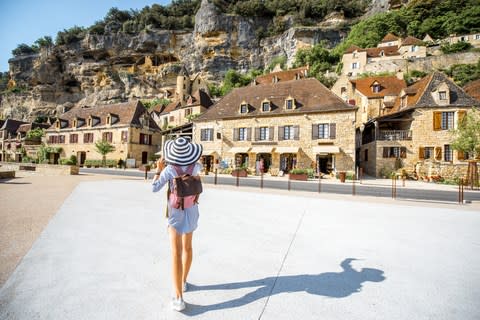
And, here, what rolls also grows rugged. Rocks rise when you least expect them. Around La Roque-Gageac, cliffs loom gloriously over the Dordogne river, lending power to the proceedings. Over in the Vézère valley, rock faces pack in tighter, bursting with geology.
Farther north, limestone plateaux give way to watery greenness around Nontron. To the west, the mildly melancholic Double forest cedes to the hills of the Ribéracois. And, everywhere, winding lanes will extricate you from the crowds in an instant.
But, though the place now fairly glows with wellbeing, it has also had a tougher texture. All those castles weren't chucked up for the future tourist trade. The Hundred Years War and religious strife clattered this way. And centuries as an impoverished backwater have generated peasant unrest, and unreason. It is only 140 years since a noble was roasted and eaten in the remote village of Hautefaye.
Provence or Languedoc – which is better?
I can't see Gascons eating an aristocrat (unless he was raised specially, and corn-fed). They have too much respect for their taste buds. And their land seems too gentle and smiling to engender insane passions.
Of course, historically, this is nonsense. Gascony has had its share of mercilessness. But the pleasing slopes and views to the Pyrenees don't hint at hard times, as the more dramatic Dordogne sometimes does. In this Gers region, hills curve up to woodland and lakes, down to river valleys and vineyards. The impression is of traditional, even yeoman, prosperity – keen to welcome rather than overwhelm.

But, though several steps out of the mainstream, Gascony does not fit the backward France profonde category. With a sense of self rooted in centuries, the place is as open as the sky above. Its major music festivals cover jazz, country and latino – none of them strictly Gascon traditions.
Scores: Gascony 7, Dordogne 9
Towns and villages
Let us first deal with the question of Condom. Sniggers have made this one of the most famous spots in Gascony. In the past the town hall played along with English-speaking mirth, opening a surprisingly dull museum to the contraceptive sheath. But the name, naturally, has nothing to do with latex birth control. It's a mangling of "Condomatomagus", or "market town by a river confluence".
France's 20 most beautiful villages
So let hilarity subside and attention turn to the key settlements around here. These are bastides, the result of a medieval town-planning ploy to drag peasants in from the countryside, thus making them easier to tax. Later the "new towns" were fortified as front-line posts in the Hundred Years unpleasantness.
What is astonishing is that their structure – chessboard layout around an arcaded central square – is so logical and harmonious that it responds splendidly to village needs today. Nip into Bassouès, Fourcès, Mirande or Montesquieu and take a table under the arches.
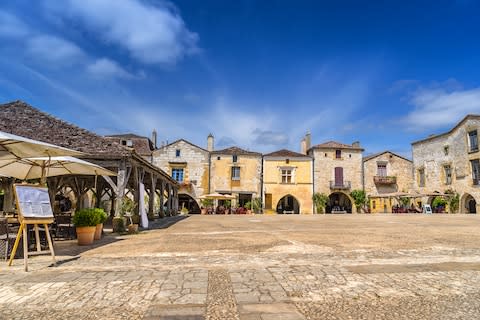
The southern Dordogne, too, has superb bastides – Issigeac, Monpazier or the H-shaped Beaumont. Elsewhere, though, Périgord settlements grow more striking yet. Strolling Gascon towns may be lovely. Strolling the hill-topping Domme or Sarlat – with its extraordinary medieval and Renaissance centre – can be little short of soul-stirring.
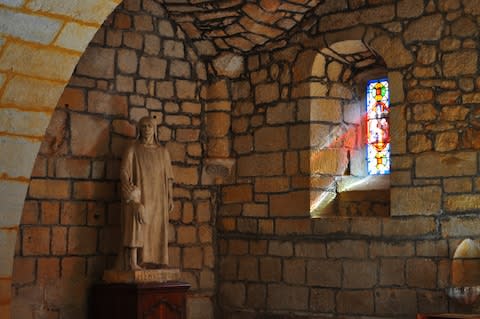
Jammed between the Dordogne river and cliff-faces, spots such as Beynac and, especially, La Roque Gageac scramble up and over themselves in search of space, generating world-class prettiness. So it goes on. There's barely a town or village in which you wouldn't want to live, as generations of British re-colonisers have found. And, as county capitals go, the Gascon contender – Auch, in the Gers – is indeed agreeable, but not a patch on the Dordogne's Périgueux. Here's a country town with contemporary life vibrating through a terrific tangle of ancient streets and squares.
Gascony 7, Dordogne 8
Burgundy or Bordeaux – which is better?
Art and history
Alter that to art and pre-history and the Dordogne’s Vézère valley is all-but-unsurpassable. In few other places did our earliest ancestors express themselves so articulately. If you see the cave paintings at the Abri Font-de-Gaume outside Les Eyzies and aren’t moved, I suggest you go home to X-Factor. Up-river at Montignac, the all-new Lascaux IV reproduces quite wonderfully the setting, the bison, horses and 16-foot bull of the original Lascaux cave, now off-limits to visitors.
Indeed, the whole area is so thick with pre-historic sites that you must choose or risk grotto fatigue. Opened in Les Eyzies in 2010, the Centre d’Accueil de la Préhistoire is a good, free introduction. Then make for La Madeleine at Tursac, a riverside trogolodyte village occupied from 1500BC to the 20th-century. Nearby, the Roque-St-Christophe was a vertical cliff-face settlement and fortress from 55000BC to the Renaissance (when, I imagine, they invented vertigo). Then go for lunch; that’s enough for the time being.
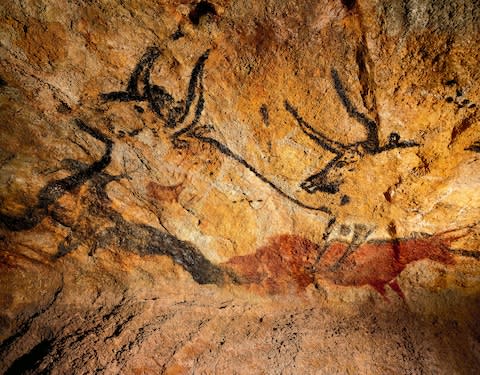
As a Hundred Years war-zone, the Périgord also has all those castles. From their rocky perches high above the Dordogne river, Castelnaud (then English) and Beynac (French) still stare at one another with masterful malevolence. Further north, Hautefort and Jumilhac have magnificence to spare. My favourite is, though, back by the main river. The Chateau-des-Milandes was once owned by Josephine Baker, the leading topless music-hall star of the inter-war years. It’s now a vibrant tribute to her life, talent and taste for micro-skirts made of bananas.
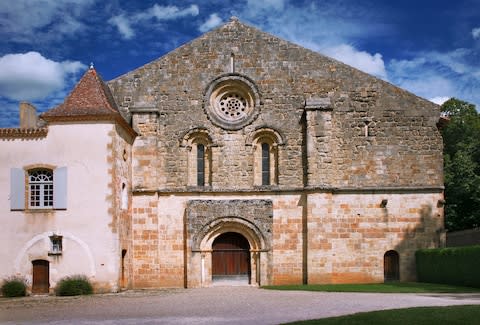
In Gascony history appears – wrongly, of course – to have been a less bumpy ride. Certainly, there’s something exquisitely restful about the cloisters at the medieval collegiate church of La Romieu. And, near Valence-sur-Ba?se, the superb Flaran abbey also seems at peace with unruffled surroundings. It’s now home to the Simonow art collection, so works by Cézanne, Courbet and Renoir enliven the old stone walls.
Further south, the Chateau-de-Lavardens has a mighty presence rendered benign by the old village tucked in round its skirts. The chateau, too, favours first-class art shows. It’s a Gascon habit to spring culture upon you in the middle of farmland.
Gascony 8, Dordogne 9
Activities
Ah, yes. Activities. A jolly good idea – if only you can lift yourself from the table, the terrace or a grassy bank and actually, you know, do any. I find this an increasing problem in the south-west, but you're surely stronger-willed.
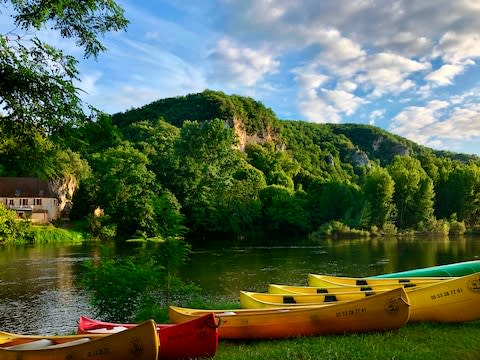
That being so… well, both Gascony and the Dordogne are open-air, breathe-deep and look-at-that-view sorts of places. They spill over with opportunities to hike, bike, horse or canoe. The Dordogne is, in fact, French canoeing central. The eponymous river can get jammed like the M25 with paddlers by the flotilla. You're unlikely to be alone on the Vézère, either, though the kick of oaring past those rock faces makes company tolerable. The more adventurous canoeist might, then, consider the Isle, the Dronne or the distinctly lively Auvézère, from Génis or Cherveix-Cubas.
Upstream, incidentally, the Auvézère has created some cracking, little-known gorges that make for a stirring trek. Look out for the Saut-Ruban waterfall near St-Mesmin. Not far away is the Rouffiac leisure-lake for water-skiing and swimming. There's a similar site at Trémolat on the Dordogne.
France's 21 most beautiful beaches
Gascony matches the Dordogne offer, but in a lower-key way because it's a lower-key place. Gascon life also has a southern, Hispanic swirl that you don't get north of the Garonne. So you'd better believe they like annoying bulls, whether in proper corridas or the marginally less lethal courses landaise. These involve fit young madmen jumping over bulls and, in theory, both beast and lunatic survive.
Gascony 7, Dordogne 8
Food and drink
With its goose fat and gizzards, ham, foie gras and duck confit, south-west cuisine is tough on vegetarians. But it has other, even more estimable virtues – and the greatest is that it is invariably attended by conviviality. If you can leave a table round here without feeling the world is a brighter place, and conceivably weaving a bit, then, once again, I admire your strength of character.
Naturally, our two regions have much in common – heartiness, duck-based meatiness and, wonderfully, very low rates of cardiac arrest. But they have their particularities, too. In Gascony, the Gers is perhaps slightly ahead in foie gras production. (Visit the Terre Blanche farm at St Puy and try to look convinced as they tell you force-feeding isn’t cruel.)
10 dishes you cannot leave France without eating
The county also fills your glass pretty satisfactorily. Madiran is a virile red wine to stiffen resolve, the C?tes-de-St-Mont a very more-ish range of all three colours. (Visit the Plaimont people in St-Mont, to the SW of the county.) But the star tipple is armagnac, than which nothing ends a meal, or an evening, in more genial manner. For supporting evidence, make for the Chateau de Millet outside Eauze, Chateau Bordeneuve at Castelnau-d’Auzon or the magnificent Chateau Busca-Maniban at Masenc?me, near Condom. All are first-class producers.
Nor is there much need to go thirsty in the Dordogne. Focussed on Bergerac, Périgord vineyards peak, I reckon, with Pécharmant reds, C?tes-de-Bergerac (all three colours) and both Monbazillac and Saussignac mellow whites. Producers across the district will welcome you, none more so than the Dubard family at Chateau Les Farcies du Pech. Their Pécharmant reds are well worth a detour to the outer bits of Bergerac.
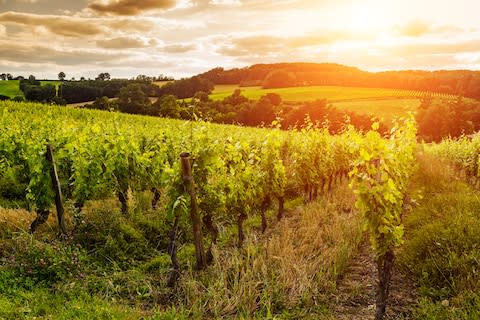
Meanwhile, walnuts show up frequently in Périgord cooking as, of course, do truffles … notably around Sorges, where there’s a decent museum to the tuber melanosporum, and the Auberge-de-la-Truffe in which to eat it. Be wary, though, of the local winter truffle markets. The fungi cost a fortune, and not all sellers are as honest as they look (and they don’t look that honest in the first place). Go with someone who knows his stuff.
Verdict
So, where to go? Both offer a brilliantly bucolic time but, should you wish, the Dordogne experience can be more densely packed. There's marginally less to haul you off the sun terrace in Gascony.
Gascony 38, Dordogne 41
